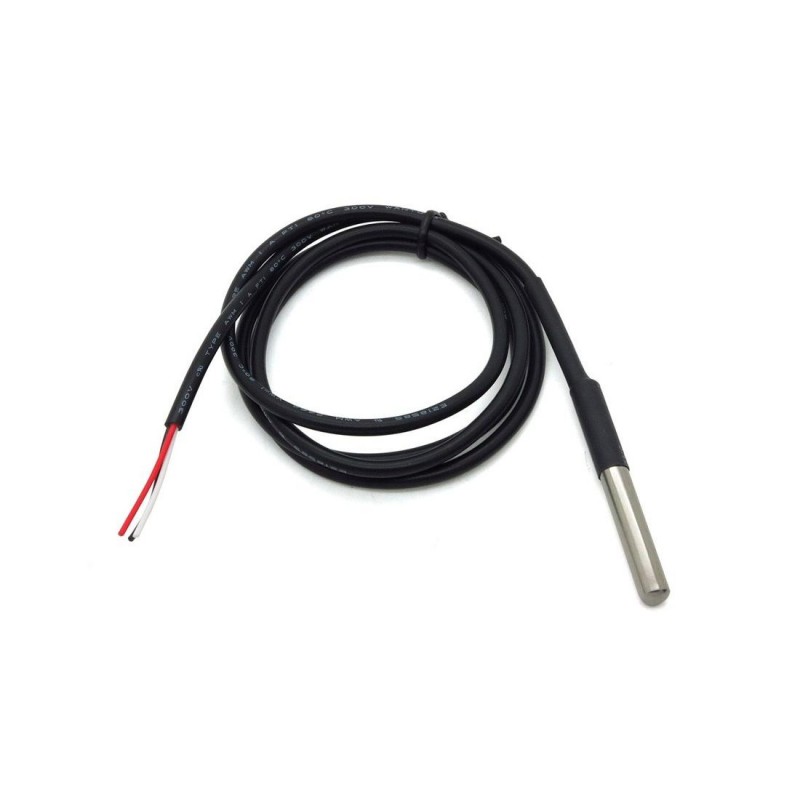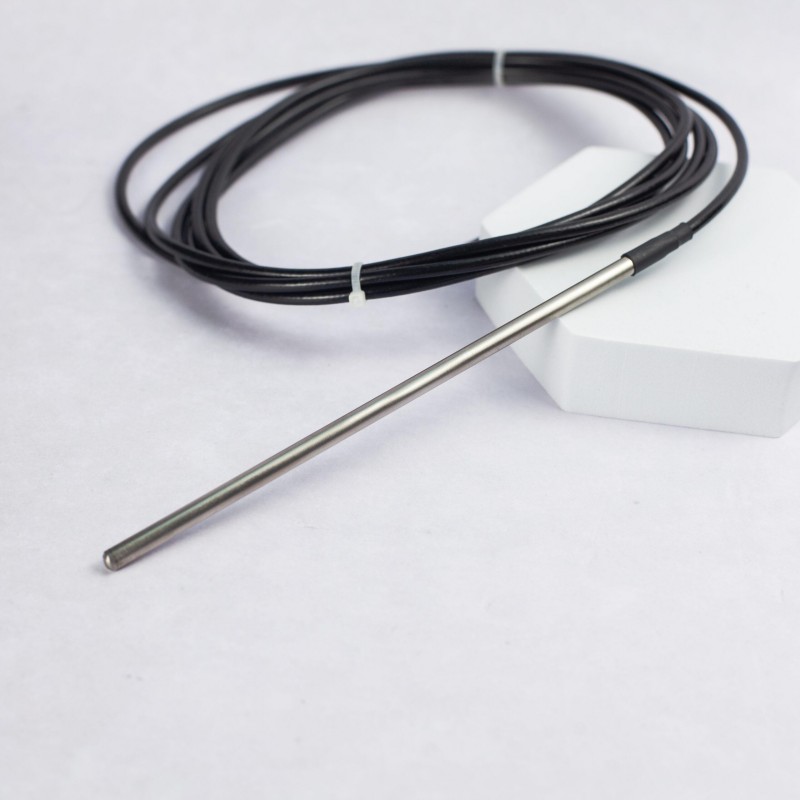The sweltering heat of summer can transform a leisurely drive into an uncomfortable ordeal if your car’s air conditioning system isn’t performing effectively. At the heart of this system lies a critical component: the temperature sensor. This device plays an indispensable role in maintaining the balance of cool air flowing inside your vehicle, ensuring both driver and passenger comfort. However, when issues arise, understanding the function and maintenance of these temperature sensors becomes crucial, especially for those who prefer DIY fixes or are keen on detailed car care. This article delves into the significance, maintenance needs, and potential issues related to car air conditioning sensors, providing a comprehensive guide for every vehicle owner.

Understanding Temperature Sensor in Car Air Conditioning Systems
The temperature sensor in a car’s air conditioning system is a crucial component that significantly influences your driving experience. Responsible for relaying temperature information to the car’s onboard computer, these sensors ensure the air conditioning system produces the optimal cooling effect to maintain the desired cabin temperature. When the car is equipped with an accurate temperature sensor, it effectively adjusts to changing temperature conditions, enhancing comfort and fuel efficiency.
Temperature sensors come in various types, including thermistors and infrared sensors. Each operates on different principles but with the common goal of precise temperature monitoring and reporting. Manufacturers install these sensors strategically within the vehicle to continuously assess and report the temperature inside the cabin. Without these sensors, the air conditioning system would fail to adapt to external conditions or driver preferences, leading to an uncomfortable driving experience and potential inefficiencies in fuel consumption.
How Temperature Sensor Work
Temperature sensors operate by detecting the ambient air temperature and conveying this data to the car’s control systems, which adjust the output of the air conditioning as necessary. A typical thermistor-based sensor changes resistance with changes in temperature — a principle known as the negative temperature coefficient. This change in resistance alters the voltage flowing through the sensor, which the car’s computer interprets to either increase or decrease the cooling output.
An advanced variation includes infrared sensors, which measure the heat radiating off surfaces, like the car’s interior elements, to gauge temperature more dynamically. These sensors can quickly adapt to sudden temperature shifts, offering superior control and efficiency.
Regardless of the type, regularly scheduled maintenance and careful car care are vital to ensure these devices function correctly over the lifespan of the vehicle. Regular diagnostic checks and adherence to manufacturer guidelines can prevent minor sensor issues from escalating into major system failures.

Common Signs of a Faulty Temperature Sensor
Recognizing the signs of a faulty temperature sensor early can save car owners significant time and funds. One of the most common indications is inconsistent cooling within the cabin. If you notice that your car’s air conditioning is blowing warm air intermittently or fails to maintain a steady temperature, the sensor might be malfunctioning.
Other signs include an incorrect temperature reading on your car’s dashboard or the air conditioning system not responding to changes in temperature settings. Additionally, unusual noises or strange smells emanating from the vents could also indicate sensor issues. When left unaddressed, these problems can lead to further car maintenance challenges, potentially affecting other components of the air conditioning system.
A meticulous approach to car care and prompt attention to these signs can mitigate costly repairs and ensure your temperature sensor — along with the entire AC system — remains in optimal working condition.
DIY Fixes for Temperature Sensor Issues
For the mechanically inclined, a DIY approach to fixing a faulty temperature sensor can be an appealing option. However, it’s essential to diagnose the problem accurately before attempting any fixes. Start by verifying the sensor’s condition using a multimeter to check for continuity. If there’s resistance fluctuation corresponding to temperature changes, the sensor is likely fine. However, if there’s no resistance change or the readings are inconsistent, it may need replacement.
Disconnecting and reconnecting the sensor might resolve any contact issues caused by corrosion or dirt. If a replacement is needed, ensure the new sensor is compatible with your exact vehicle model for optimal performance. Following the manufacturer’s instructions closely during installation will ensure the system functions smoothly.
Even if you’re attempting a DIY repair, consulting detailed service manuals or manufacturer guidelines can be invaluable. While personal expertise can address minor issues, professional assistance should not be avoided for complex problems to prevent voiding warranties or causing unintended damage to the air conditioning system.

Importance of Regular Maintenance and Car Care
Routine maintenance is the cornerstone of a well-functioning car air conditioning system. Regularly inspecting the temperature sensors and the entire AC system can prevent unexpected failures. Cleaning the sensors and ensuring they are free of dirt and grime is a simple yet effective step in car care practices. This routine job not only prolongs the sensor’s life but also prevents false readings and erratic performance.
Scheduled maintenance, ideally in alignment with the manufacturer’s recommendations, ensures all components, including temperature sensors, are in peak condition. Some automotive service centers offer specialized diagnostics for electronic components like sensors, providing detailed insights into their performance and longevity.
Additionally, maintaining the car’s battery and electrical systems in good condition aids in the electric supply to the air conditioning system, including the sensors. Properly functioning electrical systems reduce the likelihood of voltage fluctuations that could damage sensitive components like temperature sensors.
Choosing the Right Manufacturer for Temperature Sensors
Selecting the appropriate temperature sensor for your vehicle requires careful consideration of quality and compatibility. Ideally, use sensors provided by the original manufacturer (OEM) to ensure they match the vehicle’s specifications and perform reliably under various conditions.
OEM parts are typically more reliable than aftermarket options since they are designed to meet the vehicle’s original equipment specifications. While aftermarket sensors might offer cost savings initially, they may not provide the same longevity or performance levels, leading to more frequent repairs or replacements.
Researching manufacturers and reading customer reviews can aid in selecting the right sensor. Many car enthusiasts share their experiences with different brands and models online, offering invaluable insights into performance, durability, and overall satisfaction. For vehicles fitted with aftermarket parts, ensuring compatibility and understanding warranty implications can also guide your purchase decision.

Enhancing Efficiency with the Latest Sensor Technologies
In recent years, advancements in sensor technology have further improved the precision and efficiency of car air conditioning systems. Modern temperature sensors are equipped with enhanced materials and advanced circuitry that offer more accurate readings and faster response times. Some of these advanced sensors incorporate digital signal processing, enabling them to perform diagnostics and calibrate themselves automatically.
These technological improvements can significantly enhance the overall performance of the air conditioning system, making it more responsive to user inputs and environmental changes. Cars equipped with state-of-the-art sensors often enjoy superior climate control, contributing to a more luxurious driving experience.
Manufacturers continually research and develop new sensor technologies, driven by the demand for smarter and more energy-efficient vehicles. Understanding the latest offerings in temperature sensor technology can be beneficial when considering upgrades or replacements for your vehicle’s air conditioning system. Keeping informed about these innovations ensures that you can make educated choices regarding your car’s maintenance and future upgrades.
Impact of Temperature Sensors on Vehicle Fuel Efficiency
One often overlooked advantage of a well-maintained air conditioning system, facilitated by functional temperature sensors, is improved fuel efficiency. When a sensor accurately measures and regulates cabin temperature, the air conditioning system runs more efficiently, reducing unnecessary strain on the engine and thereby conserving fuel.
A faulty sensor can cause the air conditioning system to overcool or undercool the cabin, leading to increased load on the vehicle’s engine. This not only wastes fuel but can also contribute to higher emissions, impacting the vehicle’s environmental footprint. Routine checks and ensuring proper sensor operation can help mitigate these issues, maintaining the vehicle’s overall efficiency.
Adopting a proactive approach toward managing and maintaining your car’s temperature sensors can translate into considerable cost savings over time, especially in terms of fuel expenses. Moreover, it promotes a greener approach to driving, aligning with modern environmental standards and contributing positively to sustainability efforts.

Conclusion: Investing in Sensor Maintenance for Optimal Performance
In conclusion, temperature sensors are indispensable components of your vehicle’s air conditioning system that significantly influence both comfort and efficiency. Keeping these sensors in good working order ensures your car’s air conditioning system operates efficiently, providing a comfortable ride through all seasons.
Whether you’re a car care enthusiast adept at DIY fixes or prefer professional maintenance services, understanding the role of temperature sensors, recognizing signs of faults, and ensuring adherence to the manufacturer’s guidelines are vital steps in prolonging your vehicle’s lifespan and enhancing its performance.
As car technology continues to evolve, integrating new sensor technologies with regular maintenance practices will ensure your vehicle’s air conditioning system remains reliable and efficient. This investment in maintenance not only saves money in the long run but also ensures that your driving experience remains pleasant and trouble-free.
By staying informed and being proactive about car maintenance, vehicle owners can enjoy a well-functioning air conditioning system and the peace of mind that comes with it, ultimately enhancing both comfort and vehicle longevity.